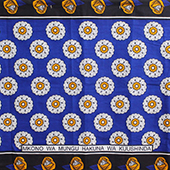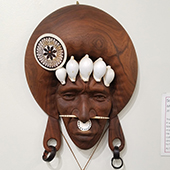Cultures
Explore these objects’ cultural meanings
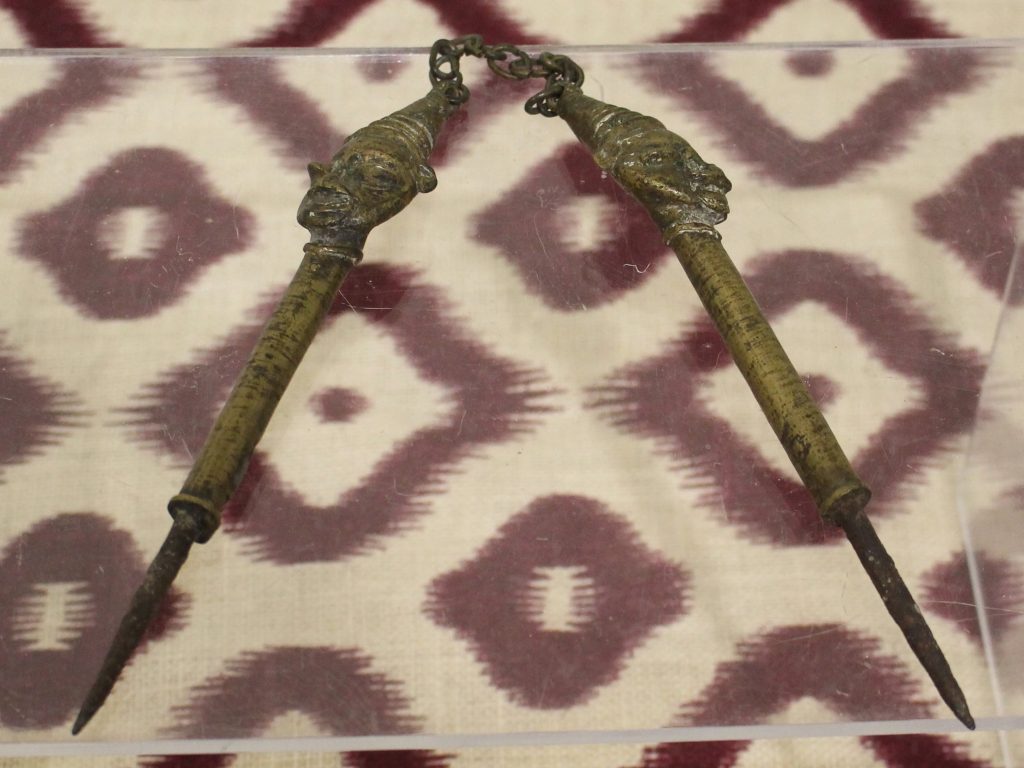
Staffs
Yoruba, Nigeria, Mid-20th Century
2019.01.E.03, from the Stanley P. Bohrer Collection
The Ogbon society is one of several secret societies present in Yoruba culture. It was thought that the Ogbon society was traditionally a patriarchal organization involved in religious rituals and politics. However, some sources support the existence of both male and female membership in the Ogbon society. This potential inclusivity might explain the male- and female-gendering of edan Ogboni staff pairs, similar to another pair in MOA’s collection (2010.04.E.04).
Curated by Kaylah Bozkurtian (’22)
Shadow Puppet
Han, China, Mid-20th Century
2018.08.E.01, Gift of Karen Sturzenbecker
This figure represents a qilin, a sacred mythic animal with a deer’s body, cow’s tail, horse’s limbs, fish’s skin, and tiger’s head. Qilin supposedly absorb all the positive traits of these animals, symbolizing luck and prosperity. In the most well-known stories of the qilin, it serves as a mount for a hero or fairy. Although this puppet has a saddle on his back, the human figure is missing.
Curated by Hex Li (’22).


Hat
Han, China, Late 20th Century
2018.12.E.14
This felt hat is traditionally made in the Jiangnan region of China, a region filled with streams, rivers, and lakes. It stands as a symbol for the people who live there because it is associated with their ancestral heritage and also as a useful component of daily life. This hat is often worn by fishermen, boatmen, and dock workers.
Curated by Abigail Franke (’22).
Carpentry Tool
Japanese, Japan, Early 20th Century
2018.03.E.01, from the Collection of Richard E. Kay
The sumitsubo is a traditional Japanese carpentry tool used to chalk lines. Historically, Japanese carpenters tended to keep a modest toolbox with the simplest tools. Decoration was often despised, as it was seen as boastful. However, these rules did not apply to the sumitsubo. An elaborately carved sumitsubo would sometimes be left symbolically in the finished building which it helped create.
Curated by Catherine Heindel (‘21).
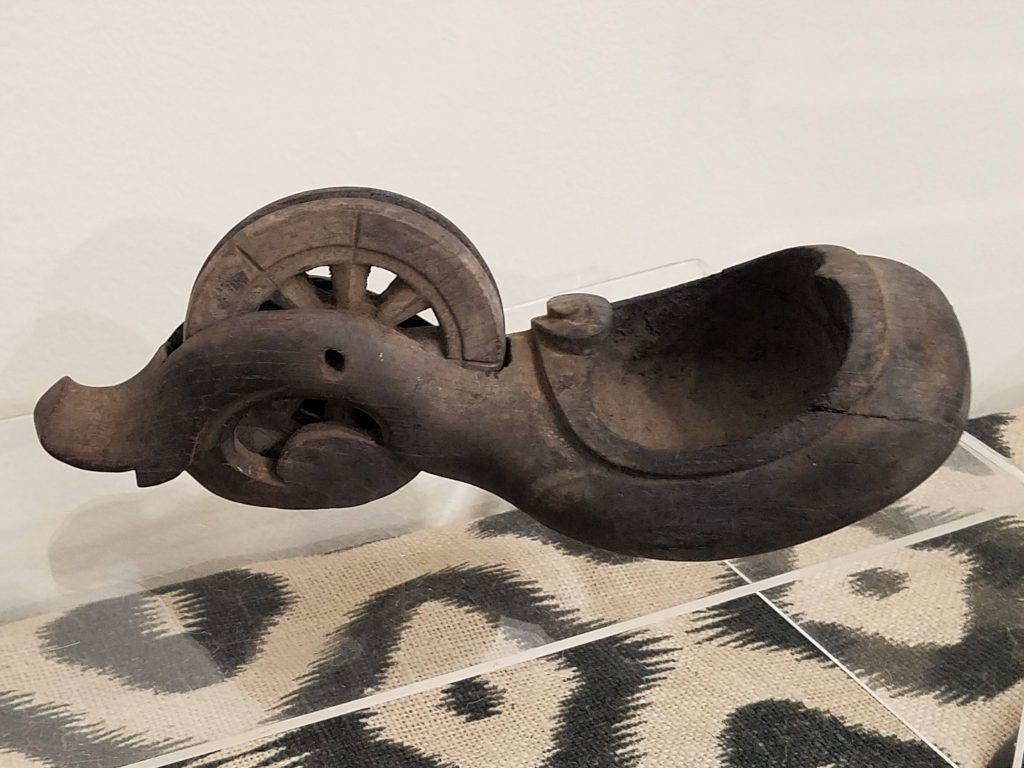
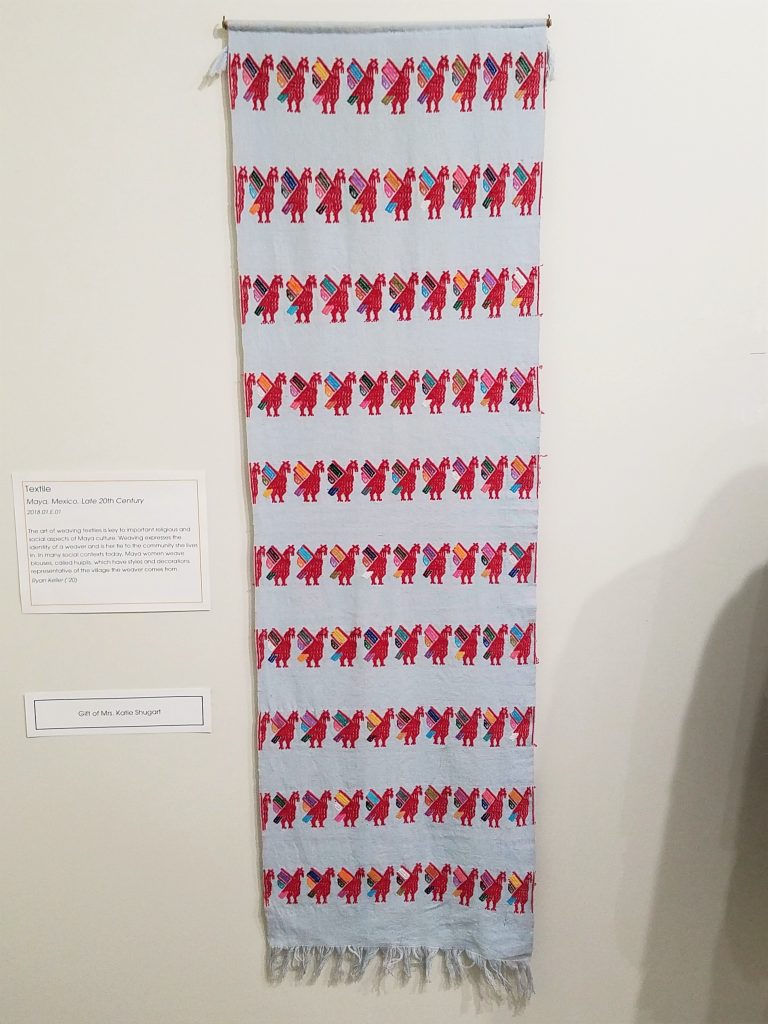
Textile
Maya, Mexico, Late 20th Century
2018.01.E.01, Gift of Mrs. Katie Shugart
The art of weaving textiles is key to important religious and social aspects of Maya culture. Weaving expresses the identity of a weaver and is her tie to the community she lives in. In many social contexts today, Maya women weave blouses, called huipils, which have styles and decorations representative of the village the weaver comes from.
Curated by Ryan Keller (’20).
Reliquary
Bura, Niger, 200 to 1200 CE
2019.07.A.21.a-b, Gift of David & Karina Rilling
Bura archaeological sites have been carbon dated to between the 3rd and 13th centuries CE. However, only one Bura site has been carefully excavated. Most other sites have been looted and many have been completely destroyed, leaving behind little to no context for the items that were obtained. The Bura were sedentary agriculturists who buried their dead in tall, conical urns, often surmounted by small figures or heads like this one.
Curated by Grace Anich (’21).

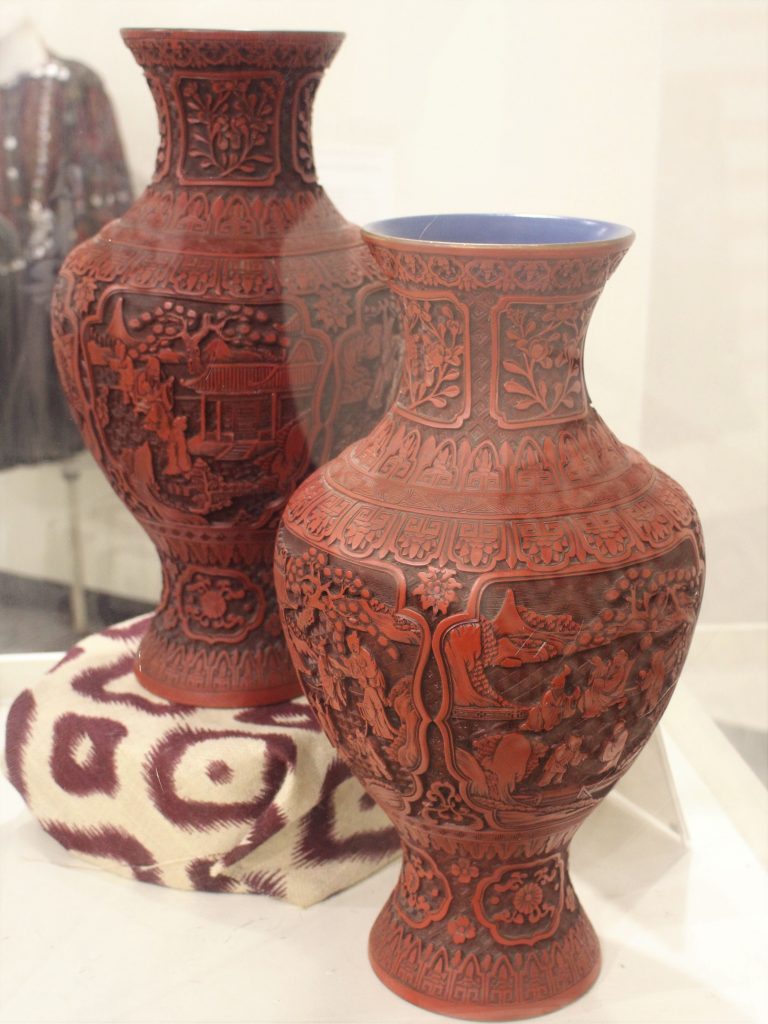
Vases
Han, China, Late 19th to Mid-20th Century
2018.14.E.01.a-b
In the Carved Lacquer tradition, anywhere from thirty to two-hundred coats of tree resin dyed with red cinnabar are applied to a decorative object, such as a vase. After the lacquer is completely dried, the artist begins the carving process. The carving process is an incredibly intricate and time-consuming task. The two vases donated to the museum are practically identical, which further demonstrates the skill it took create them.
Curated by Abi Walters (’21).
Explore the other sections of this exhibit below
